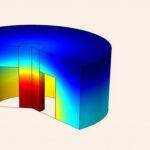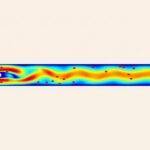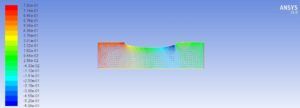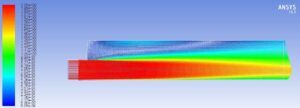Description
This section contains various examples of fluid and thermal simulations in ANSYS software.
1. Nozzle
The nozzle in a jet engine is the opening through which the exhaust stream enters the atmosphere. This device is used to achieve maximum kinetic energy. Here is a simulation of convergent-divergent nozzle compressible flow by Fluent. Numerical investigation of inviscid and compressible flow passing through a converging-diverging nozzle by Ansys Fluent software. Converging-diverging nozzles have always been of special importance in fluid mechanics.
2. Expansion
Simulation of extended flow in a pipe in Fluent: Assume that air fluid enters a pipe. When the fluid enters the pipe, the boundary layer forms near the pipe walls due to viscosity. And by moving away from the entrance, the thickness of the boundary layer begins to increase. This process continues until the boundary layer of the two walls of the pipe reaches each other and after this specific place, the flow becomes fully developed or in other words fully developed.
3. Elbow
Flow simulation in an elbow or two hot and cold fluid inlets. The purpose of this simulation is to check the final and equilibrium temperature after mixing two fluids.
4. Experiment to Calculate The Thermal Coefficient of Conduction or k
Using CFD, heat transfer can be simulated in solid and fluid areas. In software like Fluent, it is possible to thermally analyze fluids and solids separately or coupled with each other. Simulation of heat transfer in solids is the only place. that the characteristics of solid materials, including material and thermal conductivity coefficient, are required in CFD calculations. Anyway, heat transfer simulation is done by solving different forms of energy equations for different flow regimes.
5. Heat Transfer Cooling Around a Chip-Set
Heat transfer in the cooling tower is an important process that is the basis of the operation of a cooling tower. The heat transfer is done by the evaporation mechanism and it brings the coolness of the water. The action of evaporation and heat transfer depends on the average temperature difference, the level of the exchanged heat. It is the air exchange coefficient in the cooling tower. A cooling tower works effectively in various industries such as petrochemicals, refineries, power plants, etc. So the heat transfer in the cooling tower must be formed correctly so that the cooling operation of the tower is done correctly. In this project, heat transfer cooling around a chip-set is simulated.







